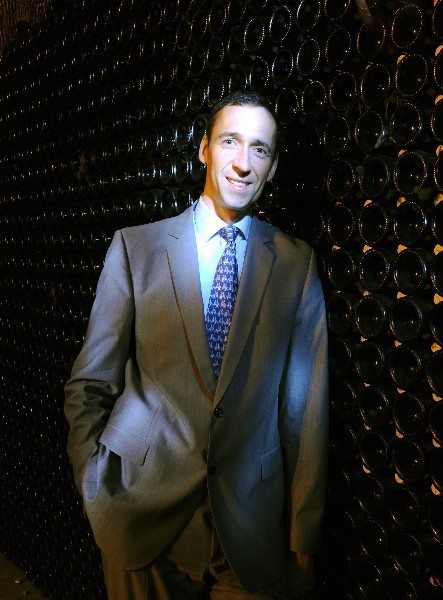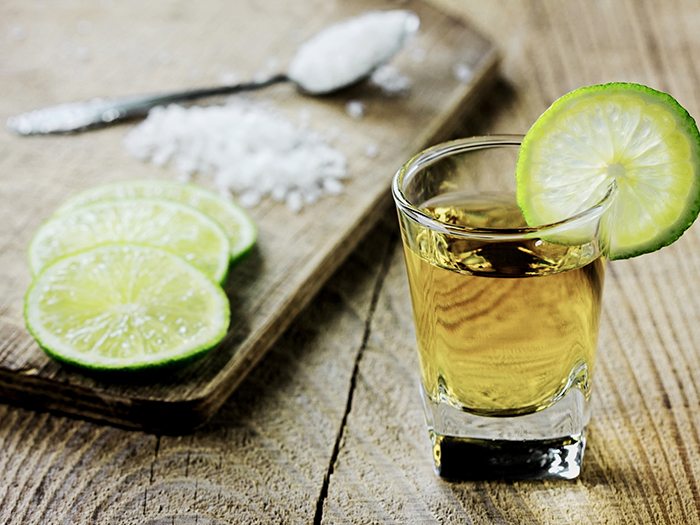What do you love about making champagne?
It is the crossroad of many different sciences together. It’s a science without being a science. It’s definitely a science to make wine but the other end you are always trying to manage the balance of elements …. you have the biology, the microbiology, the physics, the chemistry, geography, geology – it’s not so common to have all those senses together. It’s exciting intellectually, and very challenging.
Moét & Chandon Imperial has a distinct signature taste. How is that possible, and achieved?
It’s the style and the signature, and as a team [of wine makers] we consider that the most important. The priority in terms of wine creation is the mouth feel. You will always get aroma ¬unless you are a crazy wine maker and you don’t do some things right. If you harvest well, if you press well, if you do wine well, you will get more or less the aroma that you are looking for but it’s not the case for the mouth. The mouth feel is very difficult to achieve and of course for champagne one of the big secrets is the blending. We can really provide this precise signature in the champagne because we have this diversity of wines to put together. Moét Imperial is a blend of more than 100 wines which means that you can really be focused and precise on the feeling you are going to have on the wine. So that’s the first secret. The second secret of course is the cellar maturation. You need to give to the wine enough time to fully, completely integrate itself – especially if you have 100 wines together – so that the wine appears at the end a whole – not as sum of parts.
How important are the size of the bubbles?
The size of the bubble matters very much in terms of texture. It’s very important to have tiny bubbles, to have a champagne that’s not too aggressive … so the bubble really appears as an extra dimension of the wine … it has to be a part of the experience and a part of the pleasure. Really tiny bubbles bring some liveliness to the tasting but at the same time just roll on the palate very delicately. If you have big bubbles like Perrier or San Pellegrino of course the experience is not as exciting. It’s important for the tasting experience.
How long can cellar champagne for?
Forever. There’s no limit [in the cellars at Moét & Chandon]. You have a minimum but no maximum so you can keep your bottles forever. We had two bottles of Rose 1878 opened last year with selected wine [media] in Epernay – it was just fantastic. I had the opportunity of tasting a white 1900, a white 1921. There’s no limit. It’s not without risk, but there’s no limit.
Can you cellar champagne at home?
How long you can keep your champagne in the cellar in Champagne is one thing – and how long you can keep it in the cellar at home is another topic because the difference is in the cellars you have the yeast – at home you don’t have the yeast. The champagne that is kept in the cellar is kept under yeast bodies. The wine hasn’t been disgorged yet. Today, with the improvement of wine making, you have the capacity to keep champagne at home – it has a certain potential but it’s not designed for that. It is released to market when it’s at its peak in terms of taste, so when you find the champagne at the shop, it’s ready to drink. Vintage champagnes can be kept for longer because they are made and selected wines with much more potential but ageing champagne at home is always a risk. A lot of people age their champagne because they do it for their other wines. They think it’s the same logic, but it’s not. You have to think that a Bordeaux producer is selling you a wine for ageing. The wine sold at this point is too young and often no good at this moment so he’s selling it to you at a price that is more reasonable, but you are going to age your wine at home. Champagne is the other way around. Because the maturation of the wine is very difficult, we do the maturation for you in the cellars and release the wine ready for enjoying. This is why champagne is so expensive, because you integrate into the pricing the fact that you have the ageing, which you don’t have if you buy a red wine here or there.
What would be your most memorable Champagne moment?
Napoleon said, “You need to celebrate your victories so you need to have champagne, and when you have defeat, you need to cheer up, so you need to drink champagne also.” I’m not sure of the exact English translation but I think it’s a good summary. I think champagne is good at any moment that you feel like. The only moment which is not suitable for champagne is when you don’t feel like having it – when it’s imposed to you. It’s difficult to pinpoint a moment, especially for me – a wine maker for Moét & Chandon – because champagne is always there – for parties, for nice things, for sad things.
What do you love most about living in the Champagne region?
Living in a wine region is always nice, both in terms of scenery and quality of life and also because in viticulture countries you meet a lot of people who are really passionate about what they do and they live through the wine also – it’s a circle – they make wine, the wine makes the culture and the culture nourishes the wine. It’s very nice to be part of this and to be in the middle of that. Champagne compared to other regions also has some magical moments. Sometimes you wander around the vineyards and when the clouds just break, you have this beautiful light over the vineyards which is really magical and that you only see here.
How do you correctly pronounce Moét?
The French pronounce the ‘t’ but most international countries don’t pronounce the ‘t’. It’s ‘mo-wett’.







